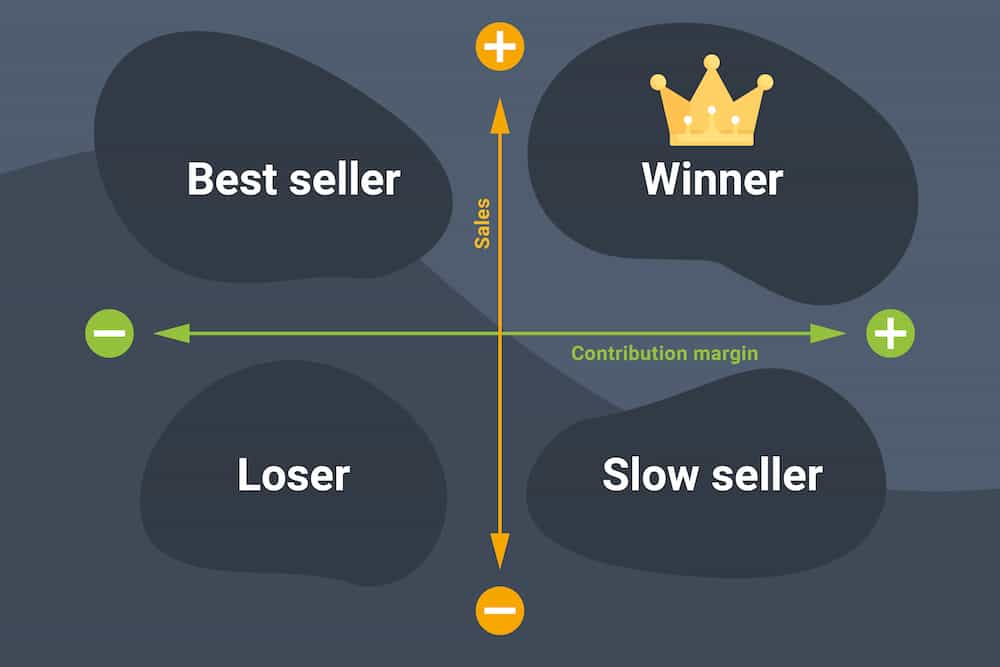Best sellers, slow sellers, winners, losers. Ever heard of it? Probably, because hardly anyone in the restaurant business can avoid the so-called best seller, slow seller analysis. That's because this menu analysis is an essential guideline for your assortment, as well as price decisions. Here's everything you need to know about it!
What is the best seller, slow seller analysis?
The best seller, slow seller analysis is a common marketing model. The only difference is that in the marketing industry, we don't talk about racers or sleepers, but about Cash Cows or Poor Dogs. The underlying principle remains the same: Based on the contribution margin and sales mix, the offer – in your case the menu – is evaluated. The best seller, slow seller analysis is defined as the evaluation of individual business segments or assortment areas according to their respective earning power.

So, with the help of the best seller, slow seller analysis, you find out how well a dish is selling and how much profit it brings. With this result, you can divide your dishes into four categories:
Dishes that
-
sell well but bring in little or no money = best seller
-
sell well and bring in a lot of money = winner
-
do not sell well and bring in a lot of money = sleepers
-
do not sell well and bring in little money = losers
The easiest way to perform the best seller, slow seller analysis for restaurants
Take the calculated contribution margin and the sales figures for the respective dish. Fortunately, what normally requires a bit of effort and calculation, is quite simple for you as a FoodNotify customer.
Calculate contribution margin
Use our contribution margin calculator in your FoodNotify account. All individual prices from your suppliers and for the individual product are already stored in the database and are automatically used for the calculation. It´s that easy.
Calculate sales figures
One of the sole advantages that the POS system has brought is that all dishes sold are automatically stored. Because of this, you can easily obtain the desired information on the respective sales figures.
Comparison
This is the easiest part of the exercise. For each dish, compare the contribution margin and the sales figures. This will help you figure out which category each item on the chart can be assigned to and, consequently, how important it is to the profit.
A few tips on what to do with this knowledge
Promote the dishes in the winners and best sellers category
Highlight the "winners and best seller dishes" visually in your menu or promote them verbally (for example, as the dish of the day). This will encourage your guests to order the dishes that will bring you the highest profit.
Identify trends
Can you identify a trend in your successful menu? Then you can consider expanding your offers in that direction, or even set a marketing focus in this direction.
Eliminate a few losers from the offer
There are a few dishes that are hardly ever ordered and even if they are, they hardly bring you any profit. So why stick with them? You should eliminate a few of these loss-makers from your menu.
Optimize your prices
Based on the results, determine which items you should raise or lower your prices on. This way, you can also make the dishes in the slow seller category more attractive.
Communicate the results to your service staff
Knowledge is power. That's true here, too. It's absolutely important that your service employees know about the results as well. This way, they understand which dishes should be recommended and which should not.
Why it's worthwhile to carry out menu optimization
Is it really worth the time and effort? Yes. Definitely. It's the only way to gain insight into your dishes and their contribution to your financial success. You can identify loss-makers and economic priorities more quickly.
Simply speaking: Only with the best seller, slow seller analysis you will know which dishes will earn you a lot of money and which will not, and you can act accordingly. Just because a dish is popular and sells well, doesn't mean it will help you financially.
That knowledge is very important. Especially when things are going well, you might think to yourself; "Everything is going well anyway. It'll all work out”, and just let it go. This type of thinking leaves you vulnerable to missing out on important revenue.